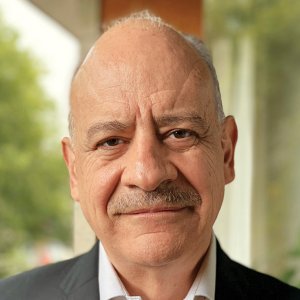Will End of Sexennium Make Us Victims of Uncertainty Again?

STORY INLINE POST
Whenever we are in the last months of a presidential term in Mexico, in the construction industry (and surely in all industries), we become worried about an endless number of situations: Politics: Who is going to win? Will current plans continue? Will it suit me? Financial: Will there be a devaluation of the currency (although that already seems to be in the past ... or not?). Social: Will we be at peace with the winner of the elections? Will social tranquility be maintained? Will people not speculate to continue investing and consuming and keep the economy moving? And many more questions.
Yours truly is not even remotely an expert on these issues, nor do I intend to talk about them, but like many of us, I am someone who suffers the consequences of all these situations. What to do then to preserve what has been achieved? From our perspective as businessmen or construction officials, can we do something to not be victims of the situation, but instead make the most of it? The answer that I propose to analyze is that yes, of course, we can do a great deal.
Construction companies move and enjoy prosperity alongside public investment. That is, when public investment takes off and grows, construction companies, in general, do as well; equally when these investments decrease (as happens at the end of six-year terms and the beginning of new ones), related companies also reduce their activity. The entire company should face this possibility and prepare for it, such as concluding our contracts, especially if they are contracts that do not extend beyond the six-year period, collecting fees and ensuring deliverables, among others..
Likewise, ensure the diversification of the markets with which we work to be able to “jump” from one to another, avoiding inactive stages that only eat up the profits generated from the proverbial “fat cows.” Also ensure our fixed costs do not consume resources beyond those established by good practices, and above all, that we do not have excessive human capital structures that reduce efficiency and dilute responsibility.
That brings us to a very important point in the discussion: the people in our company.
It is natural that, given our technical training as engineers and our strengths, we always seek to solve challenges like those mentioned above with technological solutions or resources, new programs, new systems, new positions, among others. But the reality is that among our people, what needs to change is NOT their knowledge, BUT their skills, especially those that allow them to react assertively in all circumstances, allowing them to contribute that extra bit that is needed in the worst moments and during uncertain stages and times of great change, such as the endings and beginnings of the Mexican six-year terms.
How are we positioned in that regard? What have we done to improve? What can we do now?
If we start from the principle that within each person there is the Leader who is needed and that we just must discover it, as Michelangelo beautifully said when defining his work as simply releasing or bringing out the form that was already there in the marble. This is how we should see our associates: they have those capabilities there inside them, dormant, potentially, to be developed, yes, but they are undoubtedly there waiting to be used and exploited.
The first step then is to accept that these abilities exist within each person and that we must make them emerge. Once these abilities come to light and each person can gradually put them into practice, the results will begin to appear immediately. It is up to the most responsible people in companies to incorporate into their results package and performance evaluations that their associates grow in these aspects. You must choose the best way or ways (there are several) to develop these aspects in people: guided readings, specialized consultants, practical workshops, among others. The point is to start with something and always keep it in mind, support it, spend time on it and find in our organization the best way to promote it among our associates.
The future of organizations, with the changing environment and how difficult it is to prevent and anticipate, will not be to have the best machinery, material resources, or hard facilities.. Given that I am a civil engineer with 40-odd years of experience, today, I realize that the promising future of the companies associated with our profession is not primarily in those areas. Although we are the engineers who have modified the environment by building bridges, roads, dams, and skyscrapers, today it is about changing those professionals so that, in addition to those enormous constructions of the past, we are now also capable of building different human beings, who, as the new engineers, are capable of reading the changes in the markets, of perceiving and understanding the trends in technologies to adapt them to their own reality; engineers who are capable of negotiating with their clients and suppliers to resolve the obstacles involved in achieving these transformations. These are complex problems — and perhaps more complex than what damming a river, clearing a ravine or making a tunnel represented in the past. Today, there are these new challenges that with courage and determination, I am sure we will be able to move forward as the great professionals that we are and that we only “need to remove the excess marble.”








 By Gabriel Santana Echegaray | Business Advisor -
Fri, 02/23/2024 - 12:00
By Gabriel Santana Echegaray | Business Advisor -
Fri, 02/23/2024 - 12:00













